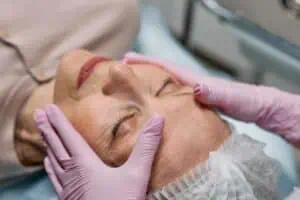
What is TMJ Disorder?
The temporomandibular joint (TMJ) is a hinge-like structure that connects your jawbone to your skull. It plays a crucial role in basic activities like talking, chewing, and swallowing. TMJ disorder, also known as temporomandibular joint dysfunction, is a condition that affects this joint, leading to a range of uncomfortable and often painful symptoms. It’s essential to note that TMJ disorder can affect one or both sides of the jaw.
Causes of TMJ Disorder
The precise causes of TMJ disorder are not always clear, and it often results from a combination of factors. Here are some common contributing factors:
Common Symptoms of TMJ Disorder
TMJ disorder can manifest in various ways, and its symptoms may vary from person to person. Some of the most common symptoms include:
If you have any of these common symptoms, schedule a visit with your dentist in Anaheim.
Treatment Options for TMJ Disorder
The treatment of TMJ disorder depends on the severity of the condition, its underlying causes, and your symptoms. Some of the most common treatment options for TMJ Disorder include:
Rest
Give your jaw muscles a break by avoiding hard or chewy foods and limiting excessive talking or singing.
Heat or Ice
Applying a warm compress or an ice pack can help alleviate pain and reduce muscle tension.
Manage Stress
Stress management techniques like meditation and relaxation exercises can be helpful in reducing jaw clenching.
Medications
Over-the-counter pain medications prescribed for muscle relaxants can be beneficial in some cases to ease muscle tension and help reduce pain and inflammation.
Physical Therapy
Physical therapy includes exercises to strengthen and stretch the jaw muscles, improving mobility and reducing pain.
Oral Appliances
A night guard or splint can be custom-fitted by a dentist in Anaheim to reduce the effects of teeth grinding and clenching.
Botox Injections
In some cases, Botox injections can be used to temporarily relax the jaw muscles and reduce pain.
Orthodontic Treatment
Correcting teeth misalignment with braces or other orthodontic devices can alleviate TMJ disorder caused by malocclusion.
As you can see, treatment for TMJ Disorder varies greatly, so it’s important to consult a healthcare professional if you suspect you have TMJ disorder. They can provide a proper diagnosis and recommend a treatment plan tailored to your specific needs.
Even though TMJ disorder can significantly impact an individual’s quality of life, there are various treatment options available to manage the condition effectively. Understanding the causes, recognizing the symptoms, and seeking appropriate treatment can help alleviate the pain and discomfort associated with TMJ disorder. Whether through rest, physical therapy, oral appliance, medication, or other interventions, there are solutions that can bring relief and improve the overall well-being of those affected by this condition.
Temporomandibular Joint Disorder (TMJ or TMD) is a condition that affects millions of people worldwide, causing pain, discomfort, and difficulty in everyday activities like eating and speaking. However, TMJ disorder can often be confusing, and patients dealing with the symptoms may have trouble finding a diagnosis and relief. That’s where… Read More…